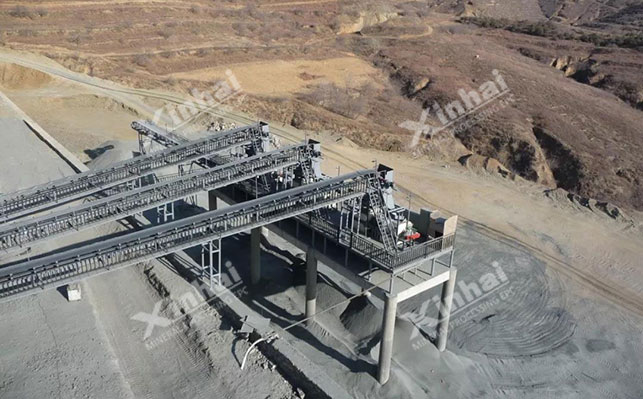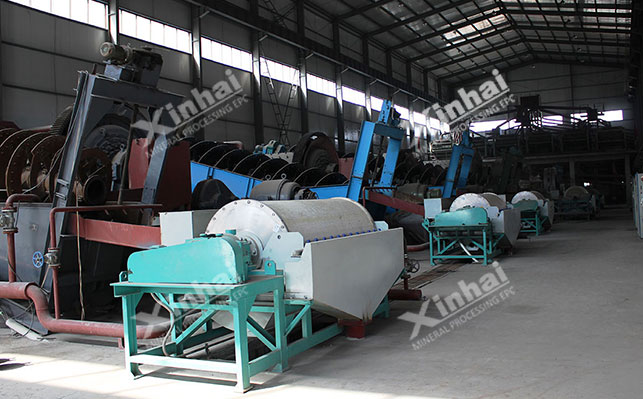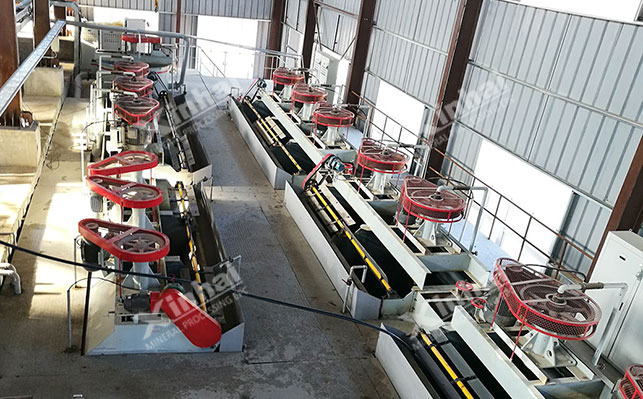Iron powder has a wide range of applications in various industries such as metallurgy, electronics, and chemical engineering. Do you understand the processing flow of iron powder? In fact, iron powder is processed from magnetite and requires multiple process steps, including crushing, grinding, magnetic separation or flotation, dehydration, drying, fine grinding, and more. Moreover, the beneficiation processes for different types of magnetite can vary significantly. Let's take a closer look!

Ore is extracted from the mine, which may contain useful iron ore and other impurities. This process involves mining equipment such as scrapers, excavators, and conveyor belts.
Extracted ore is initially crushed using crushing equipment to break larger ore blocks into smaller particles for further processing.
In the magnetite crushing stage, jaw crushers are commonly used for coarse crushing, while cone crushers handle medium and fine crushing.
The crushed ore undergoes fine grinding using grinding equipment to refine the particle size of the ore.
The grinding stage is the last preparation step before beneficiation. Grid-type ball mills are used for coarse grinding and the first grinding stage, while overflow ball mills are used for fine grinding and the second grinding stage.
Magnetic separation is employed to separate strongly magnetic iron ore from non-magnetic impurities using magnetic equipment. This is typically accomplished through devices such as magnetic drums or magnetic ore separators.
Magnetic separation is generally used for the beneficiation of single magnetic iron ores. Due to the simple composition, strong magnetism, and ease of grinding and selection of single magnetic iron ores, weak magnetic separation methods are often adopted for beneficiation. The determination of the separation process depends mainly on the grinding granularity and the richness of the ore itself.

Common ore beneficiation methods for single magnetic iron ores include:
(1) When the grinding granularity is greater than 0.2mm, most iron ore magnetic separation plants often adopt a one-stage grinding-magnetic separation process.
(2) When the grinding granularity is less than 0.2mm, a two-stage grinding-magnetic separation process is typically employed.
(3) If qualified tailings can be separated in the coarse grinding stage, the magnetic separation plant for magnetite should adopt a staged grinding-magnetic separation process.
(4) For arid and water-deficient regions, magnetite separation plants may consider adopting a dry grinding-dry magnetic separation process.
(5) Enriched but depleted magnetite ores or low-magnetic iron ores can generally undergo dry magnetic separation to remove gangue minerals, obtaining blocky enriched ores, and then go through the grinding-magnetic separation process to obtain concentrates.
For non-magnetic impurities, flotation is employed to achieve separation. During the flotation process, appropriate reagents are added to make iron ore float on the water surface, while other impurities sink, achieving separation.
Flotation and magnetic separation are often combined for the beneficiation of mixed magnetite ores. The gangue minerals in mixed magnetite ores often contain silicate or silicate minerals, along with associated minerals such as cobalt pyrite, chalcopyrite, and apatite. It is challenging to remove all gangue minerals using a single magnetic separation method. Generally, a combined process of weak magnetic separation and flotation is adopted.

The weak magnetic separation-flotation combined process can be divided into two types: weak magnetic separation-flotation and flotation-weak magnetic separation. The difference between the two lies in the direction of association between magnetite and sulfides.
(1) In the weak magnetic separation-flotation process, the associated minerals mainly enter the iron concentrate.
(2) In the flotation-weak magnetic separation process, the associated minerals mainly enter the sulfide concentrate.
Therefore, at the same grinding granularity, the process of flotation followed by magnetic separation can yield iron concentrate with lower sulfide content and higher recovery of sulfide concentrate.
The slurry resulting from magnetic separation and flotation is dehydrated to reduce water content, concentrating the output.
After beneficiation, the obtained iron concentrate slurry is dehydrated to control the water content to below 25%. Concentrators, filter presses, and dewatering screens are commonly used for this purpose.
The dehydrated iron ore slurry is dried using drying equipment to achieve the appropriate water content. Drying is typically done using rotary dryers or other drying equipment.
Finally, the finely ground iron ore is transformed into iron powder using suitable equipment. Common equipment includes powder mills, ultra-fine powder mills, and other devices.
After going through these eight processes, the processing of magnetite to iron powder is completed. In actual production, the processing flow should be determined based on the nature of the magnetite, and ore beneficiation tests should be conducted to avoid compromising the quality of the iron powder.